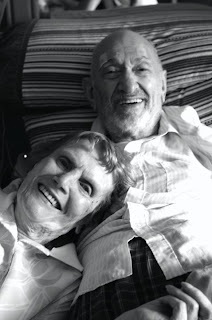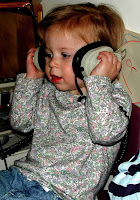 In the last post, I discussed a few benefits that come from regular meditation practice. One benefit which warrants its own piece is that meditation makes the mind ripe for inspiration. To understand this phenomenon, I will have to introduce a concept, one that is similar to the notions of God, soul, or Higher Mind (next post). Having no way to prove the existence of any of the above, and also having no way to falsify them, these abstract ideas are unprovable and fall into the realm of faith. However, I would like to point out that, despite there being no rigorous way to prove or disprove the forthcoming concept to others, you can gain experiential proof for yourself by doing what the Buddha always encouraged of his students; he’d say, “Ehipassiko,” or come see for yourself.
In the last post, I discussed a few benefits that come from regular meditation practice. One benefit which warrants its own piece is that meditation makes the mind ripe for inspiration. To understand this phenomenon, I will have to introduce a concept, one that is similar to the notions of God, soul, or Higher Mind (next post). Having no way to prove the existence of any of the above, and also having no way to falsify them, these abstract ideas are unprovable and fall into the realm of faith. However, I would like to point out that, despite there being no rigorous way to prove or disprove the forthcoming concept to others, you can gain experiential proof for yourself by doing what the Buddha always encouraged of his students; he’d say, “Ehipassiko,” or come see for yourself.
To understand what I am about to share, you must first understand the spheres which surround the earth. Although Earth has seventeen known spheres, I will only touch upon five: the geosphere, lithosphere, hydrosphere, biosphere, and atmosphere. A sphere is a three-dimensional shape equivalent to the two-dimensional circle, of which every point on its surface is equidistant to its center. The Earth itself is a sphere. One may think of Earth’s spheres, then, as smaller to larger orbs in, on, and surrounding the globe. The first and smallest is the geosphere, which occupies the space within the Earth’s core. It is the molten rock deep inside the Earth’s surface, magma as it is called, and also the mantle and plasticky-layer known as the asthenosphere. The geosphere is what makes up the inner core of the planet.
Next sphere layers outward start with the lithosphere, which is the rocky crust of land on the surface of the Earth. Litho- means “rock,” and thus the lithosphere is the mountains, volcanoes, and other rocky surfaces of the planet. Along with the lithosphere, the hydrosphere makes up the surface of the Earth. As its name implies, hydro- means “water,” so the hydrosphere is the Earth’s bodies of water. The biosphere is all the living things on the planet, including humans, animals, plants, fungi, bacteria, and viruses. And then there is the atmosphere, which surrounds the Earth in a sphere just larger than the planet itself. The atmosphere contains the gasses needed by living things to breathe and carry out photosynthesis; it maintains pressure sufficient for the presence of liquid water, and it also provides protection from the sun’s ultraviolet (UV) rays.

. I merely wish to discuss how you can use the concept of the noosphere to understand from where inspiration may come, and how you might be able to tap into this potentially ever-present source of information.
I think it is most useful to think of the noosphere as a “cloud,” very much like the information cloud in which we store our digital data. The noosphere is all the information that has ever existed or will ever exist. So unlike the internet cloud, which is the information humans have access to currently, the noosphere contains all that, along with all past unknown or lost information, and all future information as well. According to this concept, individuals do not create information with their neurology, but instead tap into the cloud of information that is the noosphere, and as such download that information as a stream of ideas and inspirations. Think about it—all mathematics, all music, all art, and all technological innovation come from the noosphere, where each individual (monad) taps into and downloads the information. We all do it. Every idea you have ever had comes from this sphere of information.
 Now how do some ideas lead to innovation that ends up influencing humanity for years, generations, and even millennia? Why do some people get big ideas while others seem to think diminutively? The answer is more complex than I can do justice in this one article, but the simple explanation is that some people are proficient at clearing their minds of the relentless mind-chatter I have referred to in a previous article on mindlessness. As a result, they clear the receiver, and thus enhance the transmission channels from the noosphere. Furthermore, while almost everyone gets great, inspirational ideas from time to time, not everyone acts on them, which a big mistake in my opinion. A discriminating mind is obviously needed to determine which ideas should be acted on and which shouldn’t, but it seems more common than not for the average person to disqualify their inspirational ideas as crazy, undoable, or unworthy for whatever reason people do. Again, as a result of my understanding of the noosphere, I think it is a mistake to discount your downloaded inspirations.
Now how do some ideas lead to innovation that ends up influencing humanity for years, generations, and even millennia? Why do some people get big ideas while others seem to think diminutively? The answer is more complex than I can do justice in this one article, but the simple explanation is that some people are proficient at clearing their minds of the relentless mind-chatter I have referred to in a previous article on mindlessness. As a result, they clear the receiver, and thus enhance the transmission channels from the noosphere. Furthermore, while almost everyone gets great, inspirational ideas from time to time, not everyone acts on them, which a big mistake in my opinion. A discriminating mind is obviously needed to determine which ideas should be acted on and which shouldn’t, but it seems more common than not for the average person to disqualify their inspirational ideas as crazy, undoable, or unworthy for whatever reason people do. Again, as a result of my understanding of the noosphere, I think it is a mistake to discount your downloaded inspirations.
While meditation is not the only practice which can increase your transmissions from the noosphere, it is a simple tool which you can utilize immediately. There is a right and wrong way to meditate, as simple as it may sound, and I find many come to my courses without having had the proper instruction on technique and philosophy behind an effective meditation practice. Both elements are necessary as philosophy without technique is empty, and technique without philosophy is blind. So my recommendation is to learn both. If you would love to learn the hows and whys of meditation, as well as other techniques which will strengthen your ability to both tap into and increase the transmission from the noosphere, please contact me. Every great idea has been downloaded from the noosphere; yours are no less great, you simply need to act on them. Tap in, download and act—it really is that simple. Contact me and I can help you with each.

























